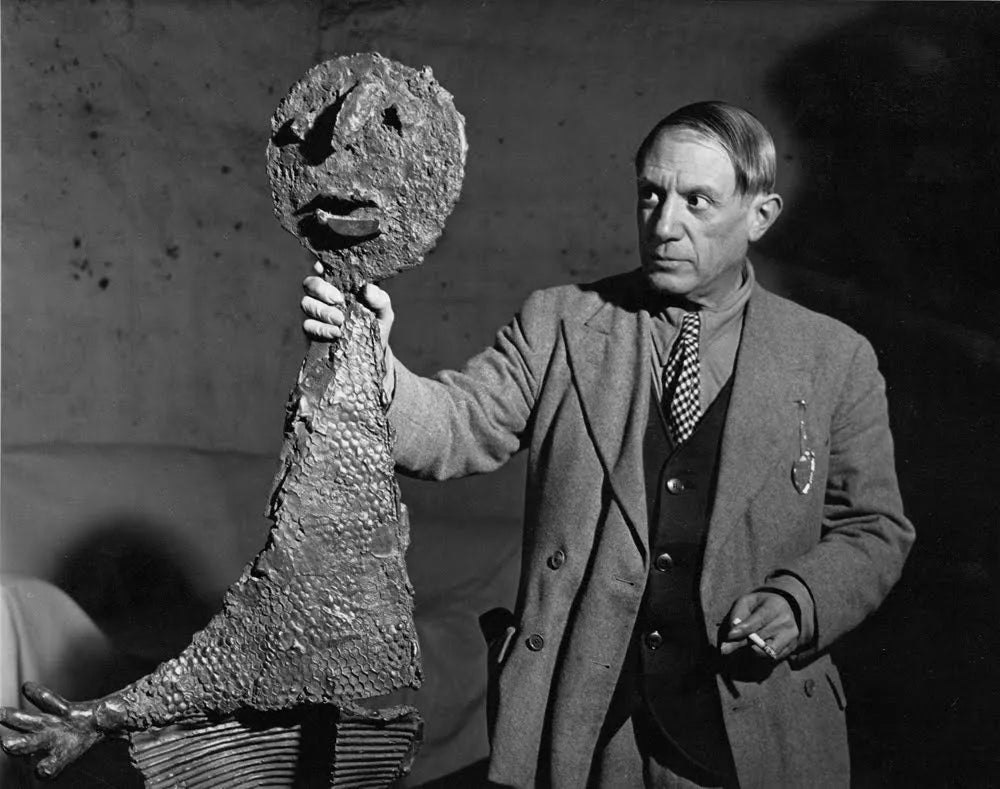Why Collectors Are Still Demanding Picasso 50 Years After His Death

Pablo Picasso, half a century after his passing, remains a central figure in the current art landscape. Widely regarded as the greatest artist of the 20th century, his influence extends beyond individual artistic achievements to encompass a profound impact on art history and our collective perception of the world.
Despite the anniversary of his death prompting a thorough reexamination of Picasso's personal life, particularly his relationships with women, this discourse has not diminished the enduring interest in his body of work. Picasso's legacy transcends the temporal boundaries of the 20th and 21st centuries, with evolving artistic trends and tastes failing to erode his robust and omnipresent appeal.
My mother said to me, 'If you are a soldier, you will become a general. If you are a monk, you will become the Pope.' Instead, I was a painter, and became Picasso.
Picasso's stature in the art market is unparalleled. Commercially, he stands as the costliest painter alive, while his aesthetic influence remains unmatched. A New Yorker article from 1939, featuring an anonymous dealer anticipating Picasso's future monetary worth, has proven prescient. Historically, five works by Picasso have each commanded over $100 million at auction, setting a record unparalleled by any other artist.

The prolific nature of Picasso's genius is underscored by an estimated 50,000 artworks, spanning diverse mediums such as prints, ceramics, works on paper, sculptures, and paintings. The ongoing excitement surrounding Picasso's work stems from the wealth of material available for exploration, contributing to continual research and documentation of the artist's various artistic stages throughout his lengthy career.

Good artists copy, great artists steal.
Living with a Picasso masterpiece on one's wall remains a genuine conversation starter that retains relevance even five decades after the artist's passing. This desirability is reflected in remarkable sales figures, exemplified by the record-breaking auction of Femme à la montre (1932) in November 2023, which fetched an impressive $139.3 million at Sotheby's. Further investigation into the Artsy Price Database reveals that even the 100th-most expensive Picasso work sold at auction in 2023 commanded a substantial price tag of $174,585. In the same year, 672 works by Picasso were sold at auction, accumulating a total of $556.3 million.
Despite these impressive figures, recent years have witnessed a consistent decline in the number of Picasso lots under the hammer. Data from preceding years indicates a market shift, with 1,199 works sold in 2022 for a combined sum of $492.8 million, compared to 1,359 works selling for $645.67 million in 2021, and 1,722 works sold for $333 million in 2019. This trend suggests a limited inventory of Picasso pieces in the auction world, resulting in increased prices for his works.

Action is the foundational key to all success.
The median price for a Picasso work at auction has risen in 2023 compared to 2015. This increase is attributed, in part, to collectors' reluctance to part with their acquisitions, marking a shift in the dynamics of Picasso transactions.
Despite a decline in auction lots, Picasso's enduring popularity persists, especially among the current generation of young collectors. Their heavy interest in representational, figurative, and narrative works aligns seamlessly with Picasso's legacy. From ceramics to works on paper and prints, the diversity in demand reflects a vibrant ecosystem where collectors, both seasoned and new, continue to contribute to the enduring strength of the Picasso market.
In 2023, fifty years after Picasso's death, he maintains an unassailable position at the summit of the art market. Beyond a critical interpretation of Picasso's legacy, this year further reinforces his relevance, particularly among collectors, affirming the enduring impact of his artistic contributions.

Ten Tips for Creative Success
-
Define Your Unique Voice:
- Establish a distinctive artistic voice that sets you apart and resonates with viewers.
-
Consistent Output and Practice:
- Commit to regular, disciplined creative practice to hone your skills and maintain artistic growth.
-
Strategic Online Presence:
- Leverage digital platforms strategically to showcase your work, build a professional online presence, and connect with a broader audience.
-
Network and Collaborate:
- Actively engage with the art community, attend events, and seek collaborations to expand your network and opportunities.
-
Business Acumen:
- Develop basic business skills, including understanding market trends, pricing strategies, and effective self-promotion.
-
Adaptability and Innovation:
- Stay adaptable to changes in the art world, and be innovative in your approach to remain relevant and stand out.
-
Embrace Critique and Feedback:
- Welcome constructive criticism as a tool for growth and improvement in your artistic practice.
-
Strategic Promotion:
- Learn effective self-promotion techniques, including creating a compelling artist statement and utilizing social media strategically.
-
Diversify Income Streams:
- Explore various avenues for income, such as teaching, commissions, or collaborations, to ensure financial stability.
-
Passion and Persistence:
- Cultivate a deep passion for your art, and remain persistent in the face of challenges and setbacks.